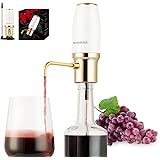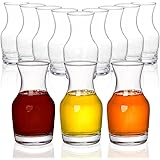Embarking on the journey of home winemaking necessitates a carefully selected array of equipment, particularly for those aiming to produce a modest volume such as six bottles or approximately 4.5 liters of wine. The comprehensive beginner six-bottle wine starter pack, as showcased in the accompanying video, is meticulously designed to provide all fundamental tools required for a successful initial foray into this rewarding craft. It is understood that proper instrumentation and sanitation protocols form the bedrock of quality wine production.
Essential Components of Your Winemaking Starter Pack
A well-curated starter kit for home winemaking typically includes several critical items, each serving a distinct purpose in the fermentation and clarification processes. Adherence to a structured approach, utilizing the correct tools, significantly enhances the probability of producing a palatable and stable wine.
Dual Fermenters for Seamless Racking
The kit prominently features two plastic fermenters, which are generally constructed from PET plastic. This material choice offers distinct advantages, including its transparency, allowing for visual inspection of the fermentation process, and its robustness. These fermenters are typically supplied with a cap, fitted with a bung or grommet, which securely accommodates an airlock. The inclusion of two fermenters is strategically vital; one container is utilized for the primary fermentation, whilst the second serves as a receptacle during the crucial racking stage. Racking, or siphoning, involves carefully transferring the fermenting liquid off the settled sediment, thereby preventing off-flavors from developing. Consequently, possessing two fermenters streamlines this transfer, ensuring minimal exposure to air and reduced risk of contamination.
The Indispensable Hydrometer: Gauging Specific Gravity
Among the most critical instruments in any winemaking endeavor is the hydrometer. This device is employed to measure the specific gravity of the liquid, which is an indicator of the sugar content. Precise measurement of specific gravity at various stages, including the initial must and after fermentation, provides vital insights into the process. For instance, an initial specific gravity reading of approximately 1.080 to 1.100 for grape wine indicates a healthy sugar concentration for yeast activity. A subsequent reading near 0.990-1.000 signifies the completion of fermentation, as most sugars have been converted to alcohol. Failure to utilize a hydrometer may result in an unpredictable final alcohol content or, worse, an incomplete fermentation, potentially leading to refermentation in bottles. Therefore, accurate hydrometer readings are foundational to controlling alcohol levels and ensuring wine stability.
Temperature Control with a Reliable Thermometer
Another fundamental tool provided is the thermometer, typically ranging from 0 to 100 degrees Celsius. Maintaining the correct temperature throughout the winemaking process, particularly during fermentation, is paramount for yeast health and optimal flavor development. Yeast strains possess specific temperature tolerances; for example, many wine yeasts perform optimally between 18-24°C (65-75°F). Deviations outside this range can lead to stalled fermentation, the production of undesirable off-flavors, or even yeast death. A too-low temperature might cause sluggish fermentation, whereas excessive heat could result in volatile byproducts. Hence, a thermometer is indispensable for monitoring both the liquid temperature at the initiation of fermentation and the ambient room temperature where the fermenters are stored, ensuring a consistent and controlled environment.
The Autosiphon: Facilitating Clean Transfers
To execute the essential racking process effectively, an autosiphon is included within the beginner six-bottle wine starter pack. This device features a pump mechanism that initiates the flow of liquid, enabling its transfer from one container to another without disturbing the settled sediment at the bottom of the first fermenter. Moreover, this kit often incorporates practical accessories such as a bucket clip and a flow clamp (throttle flow). The bucket clip stabilizes the autosiphon, preventing accidental displacement, while the clamp allows for precise control over the liquid flow, enabling the winemaker to stop or start the transfer as needed. This meticulous control is critical in preventing the siphoning of unwanted sediment, which could cloud the final wine and impact its clarity. Proper siphoning requires the receiving container to be positioned lower than the source container, leveraging gravity to maintain a consistent flow.
The Paramount Importance of Cleaner Sterilizer
Following the hydrometer and thermometer in order of significance, the cleaner sterilizer represents an absolutely critical component of any winemaking starter kit. All equipment that will come into contact with the wine, from the fermenters and airlocks to the siphon, must be rigorously cleaned and sterilized prior to use. Contamination by wild yeasts, bacteria, or molds is a prevalent cause of spoilage in home winemaking, leading to off-flavors, cloudiness, or even complete ruin of the batch. A high-quality cleaner sterilizer, such as a Wineworks product, effectively sanitizes surfaces, eradicating microorganisms that could compromise the wine’s integrity. Instances of bacterial contamination have been shown to reduce wine quality by upwards of 40% in small-scale operations. Therefore, thorough sterilization practices are non-negotiable for producing a clean, healthy, and enjoyable wine. Regular and diligent sterilization of all equipment safeguards the quality and longevity of your home-produced beverages.







